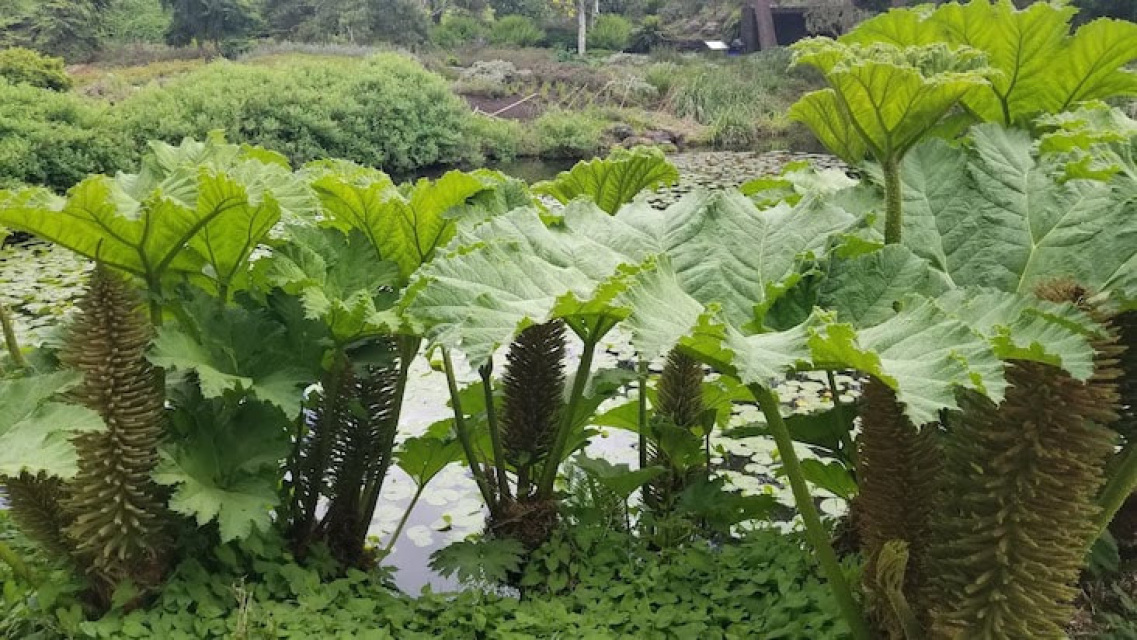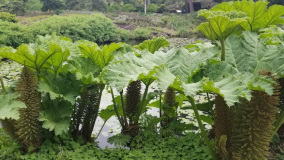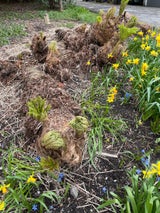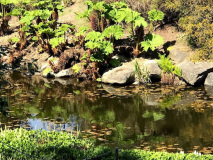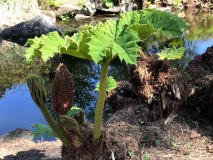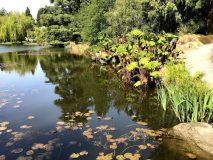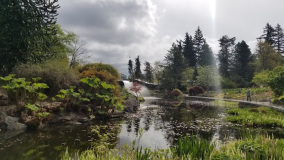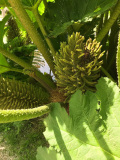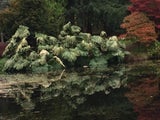- In the Garden
- >
- Gardens
- >
- Gardens I-P
- >
- Livingstone Lake
- >
- Gunnera manicata
Gunnera manicata
Common name: Giant rhubarb
Gunnera manicata's common name, giant rhubarb, is an allusion to the shape of the large, palmate leaves of cultivated rhubarb, but there is no relationship between them. G. manicata's leaves reach a width of three metres, with stalks similar in length.
G. manicata is native to southeastern Brazil. It is a thick, prickly stemmed perennial, producing tiny flowers in dense, cone-like inflorescences in early summer. The small seeds ripen into bright orange fruits. In our Garden, its dormant buds can be damaged by late-spring frosts so plants are protected by a mulch of old leaves from the previous season. The plants grow largest near open water.
150 million years old, the genus Gunnera was named after the Norwegian botanist, Johann Ernst Gunnerus (1718-1773), and contains about 40-63 species (depending which reference you read), distributed across much of the southern hemisphere. G. manicata is the largest species.
All Gunnera species form a symbiosis with Nostoc punctiforme, a genus of nitrogen-fixing cyanobacteria, allowing growth in areas lacking fixed nitrogen in the soil.
Dinosaur Food anyone? Imagine a tasty snack of Manicata Salad! Delicious if you are a hungry Sauropod!
More information about cyanobacteria and invasiveness (Hughie Jones).
*content provided by Leslie
